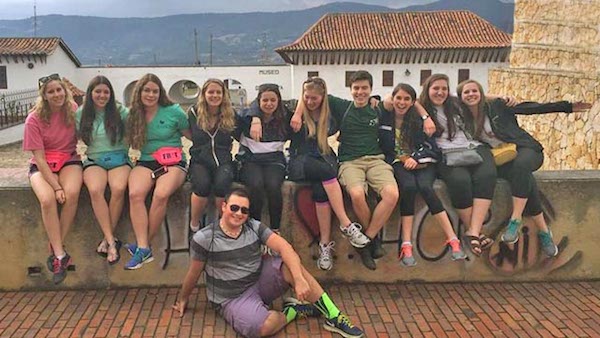I’m a Latina Jew. I live in New York City, famous for the diversity of its population; after all, 37 percent of the city is foreign born. But still now in 2014, the fact that I identify myself as Latina and Jewish, creates a bit of wonder among some Jews and Latinos.
First of all, people ask me what is the difference between Hispanic and Latino. The two words are often used interchangeable nowadays. While this article is from my own perspective, I use the definition of “Hispanic or Latino” stated in the 2010 United States Census: “Hispanic or Latino refers to a person of Cuban, Mexican, Puerto Rican, South or Central American, or other Spanish culture or origin regardless of race.”
The truth is that Latino or Hispanic are words used mainly in the United States. In Argentina, I’m Argentinian. If you ask a Colombian he will say he is Colombian. If you ask a Mexican he will say is Mexican. We only are “Latinos” in United States.
According to the 2010 Census, 50.5 million people (or 16 percent) were of Hispanic or Latino origin. In New York City near a third of the population (28.6 %) are Hispanic.
I have encountered some Jews who are used to identifying Latinos with people from Puerto Rico or the Dominican Republic. For them, I’m not Latina. I’m from Argentina. That happens because most Jews in New York City know that Argentina has a big Jewish population, and they are aware that I can be Jewish and Argentinian.
In fact, “There are about 14 million Jews around the world, representing 0.2% of the global population. Jews make up roughly 2% of the total population in North America. More than four-fifths of all Jews live in just two countries, the United States (41%) and Israel (41%). The largest remaining shares of the global Jewish population are in Canada (about 3%), France (2%), the United Kingdom (2%), Germany (2%), Russia (2%) and Argentina (between 1% and 2%)”, according to data from a report produced by the Pew Research Center’s Forum on Religion & Public Life.
So, although Jews in Argentina are only 1 to 2% of the population, it is still one of the largest Jewish communities in the world.
What do American Jews know about Argentina? Many Jews also know about the Nazis who fled to Argentina after the Second World War, and that there were two suicide bombings against the Israeli Embassy in Buenos Aires and the Jewish community (AMIA). Sometimes I’m asked if I know Rabbi Marshall Meyer, who founded the Seminario Rabínico Latinoamericano.
How many people identify as Latino Jews? According to The Pew Research Center’s 2013 National Survey of Latinos and Religion, “a majority (55%) of the nation’s estimated 35.4 million Latino adults identify as Catholic today.” About 22% are Protestant and 18% are religiously unaffiliated. Around 1 percent belongs to other religions. So Latino Jews are less than 1% of Latinos.
It is hard to talk about issues of race and religion. I’m white. My family came from the former Soviet Union. My dear Bobe came from Kishinev. So some people would tell me “you don’t look Latina.” They are confusing being Latino with race. Let’s go back to the US Census definition that clearly states, “Hispanic or Latino refers to a person of Cuban, Mexican, Puerto Rican, South or Central American, or other Spanish culture or origin regardless of race.”
Jews sometimes assume I’m Sephardi. Here the confusion comes because I speak Spanish and I’m from Argentina. Well, first of all, Sephardim spoke Ladino, which is different than Spanish. But, in fact most of the Jewish community in Argentina arrived from Germany and Eastern Europe and are Ashkenazi.
I think it is very important for Jews to learn more about Latinos and for Latinos to learn more about Jews. We work together. We live in the same cities. As the Hispanic population in the United States keeps growing fast, Jews will need to interact more with Hispanics. The Jewish population also keeps changing and is time to accept each other’s differences. Education is the best defense against prejudice and intolerance.







